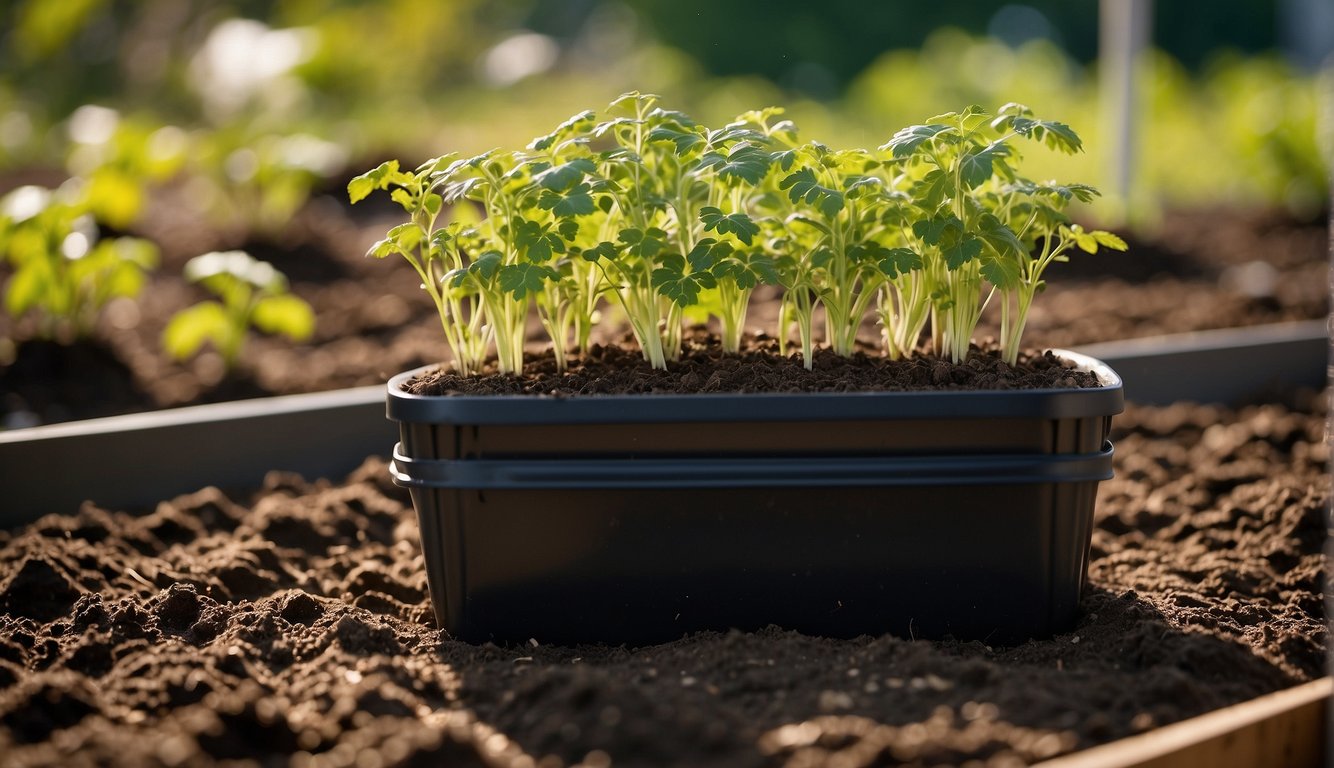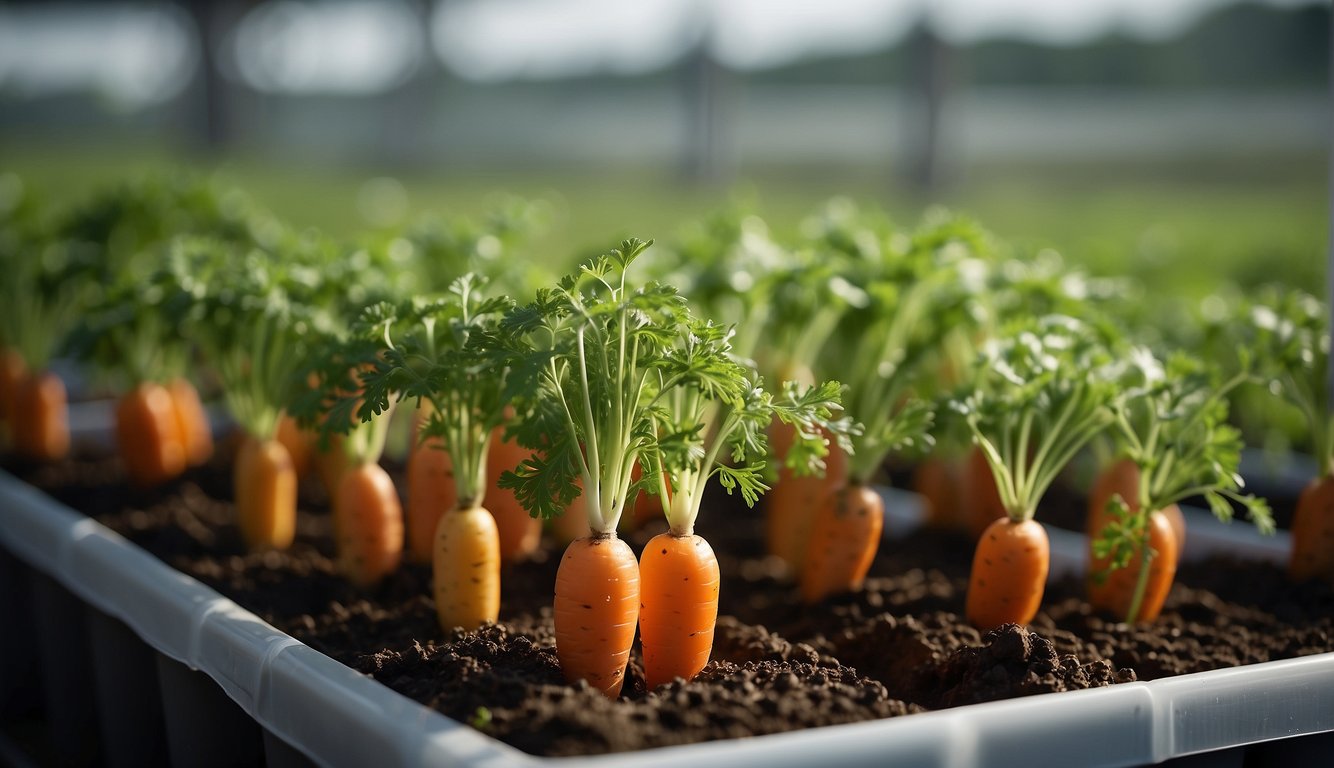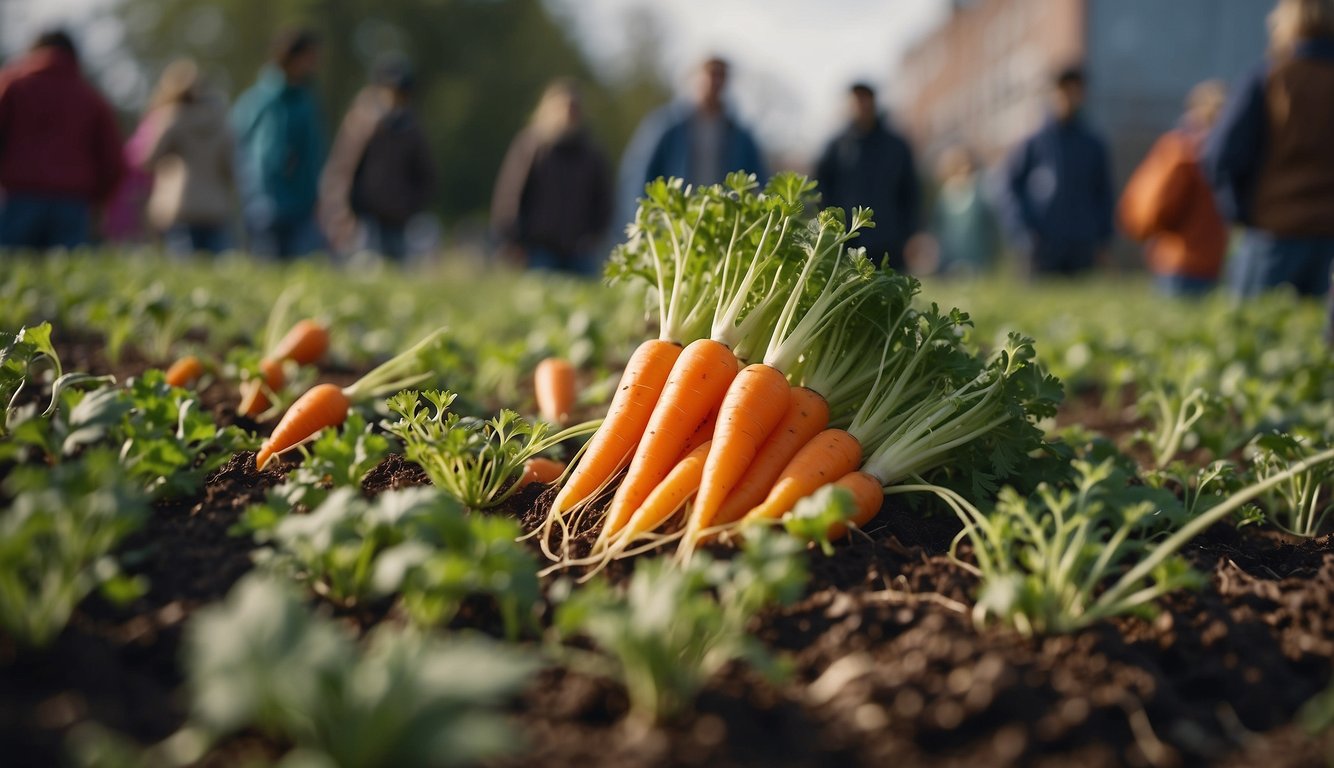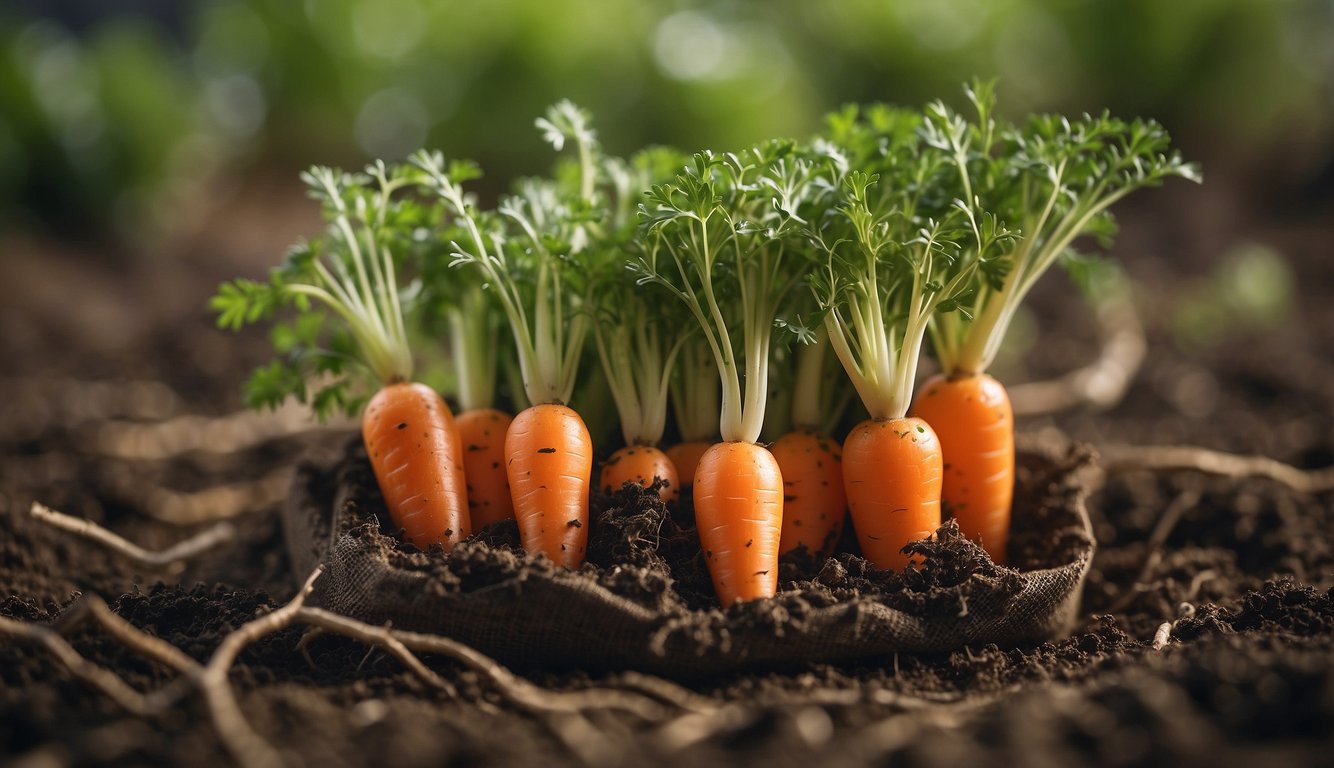TheHerbProf.com is a treasure trove of knowledge for those interested in natural healing and herbal remedies. The website is run by Paul Johnston MD. A naturopathic who has not only received extensive education in the field but also has personal experience in self-healing.
Growing carrots in a grow bag is a great way to enjoy fresh, homegrown carrots without needing a large garden space. With the right materials and techniques, anyone can grow carrots in a bag, regardless of their gardening experience. In this article, I will share my tips and tricks for growing carrots in a grow bag, so you can enjoy a bountiful harvest of delicious, nutritious carrots.
One of the first things you’ll need is a good quality grow bag. Look for a bag made from durable materials that will hold up well over time. You’ll also need potting soil or planting mix, as well as organic fertilizer to help your carrots grow strong and healthy. The quality of your soil is crucial to the success of your carrot crop, so choose a high-quality garden soil or planting mix that is rich in nutrients and drains well.
When it comes to planting your carrot seeds, there are a few things to keep in mind. Make sure to plant your seeds about 1/4 inch deep and 3 inches apart. Keep the soil moist throughout the growing season, and be patient – carrots can take a while to grow, but the wait is well worth it. With a little bit of care and attention, you can grow delicious, nutritious carrots right in your own backyard using a grow bag.
Advantages and Disadvantages of Using Grow Bags for Gardening
As someone who has grown carrots in grow bags before, I can attest to the advantages and disadvantages of using grow bags for gardening.
Advantages of Using Grow Bags
Mobility
One of the main advantages of using grow bags is their mobility. Grow bags are lightweight and easy to move around, making them ideal for gardeners who want to maximize their space or move their plants around to take advantage of the sun.
Aeration and Drainage
Another advantage of using grow bags is their aeration and drainage. Grow bags are made of a breathable fabric that allows for better air circulation around the roots. This, in turn, helps to prevent root rot and other soil-borne diseases. Additionally, grow bags have excellent drainage, which prevents water from pooling at the bottom of the bag and drowning the roots.
Choosing the Right Grow Bag
When it comes to choosing the right grow bag, there are a few things to keep in mind. First, make sure the bag has drainage holes to allow excess water to escape. Second, choose a bag made of a durable fabric that won’t tear or rip easily. Finally, consider the size of the bag and whether it will accommodate the size of the plant you want to grow.
Disadvantages of Using Grow Bags
Watering Frequency
One of the main disadvantages of using grow bags is their tendency to dry out quickly. Because grow bags are made of a breathable fabric, they allow for better air circulation around the roots, but this also means that they can dry out faster than traditional pots. As a result, you may need to water your plants more frequently when using grow bags.
Choosing the Right Grow Bag
While choosing the right grow bag can be an advantage, it can also be a disadvantage. With so many options on the market, it can be difficult to know which one to choose. Some gardeners prefer fabric pots, while others prefer cloth bags. Ultimately, the choice comes down to personal preference and what works best for your specific gardening needs.
Using grow bags for gardening has both advantages and disadvantages. While they offer excellent mobility and aeration, they can also require more frequent watering and choosing the right grow bag can be a challenge. However, with the right care and attention, grow bags can be an excellent choice for growing carrots and other vegetables.
How to Grow Carrots in a Grow Bag

Growing carrots in a grow bag is a great way to produce fresh, healthy carrots without the need for a large garden. In this section, I will guide you through the process of growing carrots in a grow bag, from choosing a location to harvesting and storing your crop.
Choosing a Location
When choosing a location for your grow bag, look for a spot that gets plenty of sunlight. Carrots need a full day of sun, although a minimum of 6 hours should work fine, too. Avoid areas that are shaded or have poor drainage.
Preparing the Grow Bag and Soil
Before planting your carrots, it’s important to prepare your grow bag and soil. Fill the grow bag with a good quality potting mix or container booster mix. You can also add some vermiculite to improve drainage. Avoid using garden soil, as it may contain pests or diseases.
Planting the Carrots
Planting carrots in a grow bag is easy. Simply scatter the seeds on the soil surface, spacing them about 3 inches apart. If you’re using pelleted seeds, you can space them a bit closer together. Cover the seeds with about 1/4 inch of soil and water well.
Watering and Fertilizing
Carrots need consistent moisture to grow well. Water your grow bag regularly, making sure the soil stays moist but not waterlogged. You can also fertilize your carrots with an organic fertilizer, such as compost or a low-nitrogen but high-phosphorous and potassium fertilizer, around 4-5 weeks after planting. Avoid using too much nitrogen, as this can cause the carrots to develop lots of foliage but few roots.
Harvesting and Storing
Harvesting your homegrown carrots is easy. Simply pull them out of the soil when they’re mature, usually around 60-80 days after planting. You can also harvest baby carrots earlier if you prefer. Store your carrots in a cool, dry place, such as a root cellar or refrigerator, to keep them fresh for longer.
In terms of carrot varieties, there are many to choose from, including Nantes, Chantenay, Danvers, Imperator, Atlas, Yaya, and Bolero. Nantes-type carrots, such as the Nantes variety, are a good choice for growing in a grow bag, as they have a shorter, stumpier shape that works well in containers.
One thing to watch out for when growing carrots is carrot fly, a common pest that can damage your crop. To prevent carrot fly, cover your grow bag with a fine mesh or fleece, and avoid planting carrots in the same spot two years in a row.
Overall, growing carrots in a grow bag is a fun and rewarding way to produce your own fresh, healthy carrots at home. With a little care and attention, you can enjoy a bountiful harvest of delicious, homegrown carrots.
Tips for Growing Other Vegetables in Grow Bags

Potatoes
Growing potatoes in containers is a great way to save space and still enjoy a bountiful harvest. You can use potato grow bags or any other large containers to grow potatoes. Make sure the container is at least 16 inches deep and 16 inches wide. Fill the container with a well-draining potting mix, and plant your seed potatoes about 4 inches deep. As the plants grow, gradually add more soil to the container to ensure the developing tubers are covered. Potatoes need consistent moisture, so water regularly to keep the soil moist but not waterlogged. Harvest your potatoes when the foliage dies back and the plants begin to yellow.
Brussels Sprouts
Brussels sprouts are a cool-season vegetable that grows well in containers. Choose a container that is at least 12 inches deep and wide. Fill the container with a well-draining potting mix and plant your seedlings about 18 inches apart. Brussels sprouts need full sun and regular watering to thrive. Fertilize the plants with a balanced fertilizer every 3-4 weeks. As the plants grow, remove any yellowing leaves and stake them if necessary to prevent them from falling over. Harvest your Brussels sprouts when they are firm and green.
Broccoli
Broccoli is another cool-season vegetable that grows well in containers. Choose a container that is at least 12 inches deep and wide. Fill the container with a well-draining potting mix and plant your seedlings about 18 inches apart. Broccoli needs full sun and regular watering to thrive. Fertilize the plants with a balanced fertilizer every 3-4 weeks. As the plants grow, remove any yellowing leaves and stake them if necessary to prevent them from falling over. Harvest your broccoli when the heads are tight and green.
When growing other vegetables in grow bags, make sure to choose the right size bag for the plant. Most vegetables will need at least a 5-gallon bag, but larger plants like tomatoes will need a 10-gallon bag or larger. Make sure the bags have drainage holes to prevent waterlogging. Use a well-draining potting mix and fertilize regularly to ensure healthy plant growth. With a little bit of care and attention, you can grow a wide variety of vegetables in containers and enjoy a bountiful harvest.
Before You Go – Grow Carrots in Bag

In summary, growing carrots in a grow bag is a great way to enjoy fresh, homegrown vegetables even if you have limited space or access to a garden. The process is straightforward and requires minimal effort.
By selecting a grow bag that suits your preferences and filling it with well-draining soil free from rocks and enriched with compost, you can plant your carrot seeds and watch them grow. Remember to keep the soil moist throughout the growing season, and you’ll be rewarded with a harvest of delicious, nutritious carrots.
When it comes to harvesting your carrots, wait until fall when the tops of the plants have died back and the carrots are fully mature. Gently pull the carrots from the soil, being careful not to damage them.
One of the great things about growing carrots in a grow bag is that you can choose from a variety of colors, including orange, purple, and white. Plus, you can easily move the bags around to find the perfect spot for your plants to get the necessary sunlight.
Overall, I highly recommend growing carrots in a grow bag for anyone who wants to enjoy fresh, homegrown vegetables without the hassle of a traditional garden.
Grow Carrots in a Bag: A Herbalist’s Guide
Today, we’re digging into a fun and space-saving gardening method – growing carrots in a bag. Yes, you heard it right! You can grow crunchy, delicious carrots right in a bag. It’s gardening made easy and accessible!
First off, let’s talk about why you’d want to grow carrots in a bag. It’s simple – it’s perfect for small spaces! Whether you have a tiny balcony or a small backyard, you can grow your own carrots. Plus, it’s a great way to get kids involved in gardening. They’ll love watching their carrots grow!
Now, let’s tie this back to theherbprof.com. As your friendly neighborhood Herbalist Blogger, I’m all about helping you make the most of your space and resources. And growing carrots in a bag? It’s a perfect example!
By growing your own carrots, you’re not just enjoying fresh, homegrown produce. You’re also embracing the principles of sustainable and space-saving gardening, topics I’m passionate about and often discuss on my blog, theherbprof.com.
So, why not give it a try? Grab a bag, some soil, and carrot seeds, and start your carrot-growing adventure. Your taste buds (and your space) will thank you!
References – Grow Carrots in Bag
Little Herb Encyclopedia, by Jack Ritchason; N.D., Woodland Publishing Incorporated, 1995
The Ultimate Healing System, Course Manual, Copyright 1985, Don Lepore
Planetary Herbology, Michael Tierra, C.A., N.D., Lotus Press, 1988
Handbook of Medicinal Herbs, by James A. Duke, Pub. CRP Second Edition 2007
The Complete Medicinal Herbal, by Penelope Ody, Published by Dorling Kindersley
Check the Following Articles!
Propagating Succulents: How to Grow New Plants
Coffee Grounds Pest Control: How to Keep It Away Naturally
Pros and Cons of Salvia: A Comprehensive Overview
Frequently Asked Questions – Grow Carrots in Bag

What is the ideal depth and width for a grow bag to cultivate carrots?
The ideal depth for a grow bag to cultivate carrots is around 12 inches. This depth allows the carrot roots to grow long and straight. As for the width, a 12-inch diameter bag is generally sufficient for growing multiple carrots at once.
Can you grow a healthy carrot crop in containers, and if so, how?
Yes, you can grow a healthy carrot crop in containers. The key is to use the right type of container, such as a grow bag or a large pot, and to ensure that the soil is well-draining and free of rocks. Additionally, carrots require full sunlight, so it is important to place the container in a sunny location.
What are the necessary steps to grow carrots in containers without using seeds?
Growing carrots in containers without using seeds is possible, but it requires a bit more effort. The process involves using carrot tops, which can be placed in a shallow dish of water until they sprout roots. Once the roots have developed, the carrot tops can be transplanted into a container filled with well-draining soil and compost.
How many carrots can typically be planted in a standard 5-gallon grow bag?
A standard 5-gallon grow bag can typically accommodate around 10 to 12 carrot plants, depending on the size of the carrots and the spacing between them. It is important to ensure that the carrots have enough room to grow and that they are not overcrowded.
What types of containers are most effective for carrot cultivation?
Grow bags and large pots are the most effective types of containers for carrot cultivation. These containers provide ample space for the carrot roots to grow and allow for easy drainage. It is important to choose a container that is at least 12 inches deep and wide enough to accommodate multiple carrots.
What are some effective strategies for ensuring successful carrot growth in grow bags?
To ensure successful carrot growth in grow bags, it is important to use well-draining soil that is free of rocks and enriched with compost. Additionally, carrots require full sunlight, so it is important to place the grow bag in a sunny location. It is also important to water the carrots regularly and to thin them out if they become overcrowded. Finally, it is important to be patient, as carrots can take several months to reach maturity.


